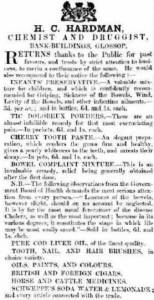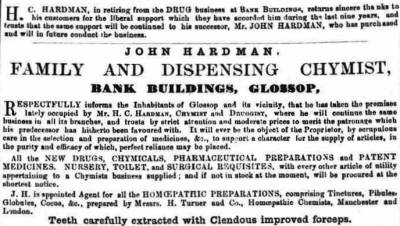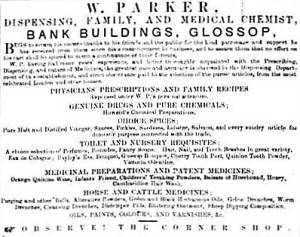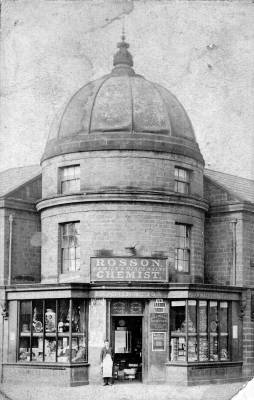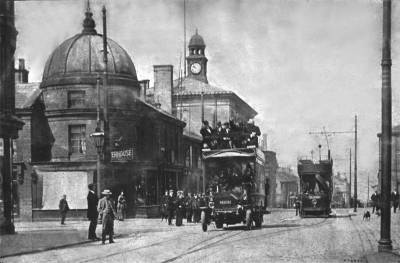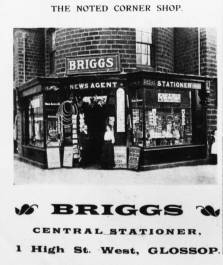| |
Bank Buildings |
5 High Street West |
7 High Street West |
| 2 & 4 Victoria Street |
1 High Street West |
3 High Street West |
| 1871 Census |
|
William Parker (Chemist & druggist) |
John Beard (Draper) |
Charles Collier (Grocer & corn miller) |
Robert Proctor (Chemist & druggist) |
| 1861 Census |
Samuel Robinson (Grocer & tea dealer) |
Inhabited but no one slept in it |
James Hardman (Boot & shoe dealer) and his son Henry (Chemist & druggist) |
Charles Collier (Grocer) |
Inhabited but no one slept in it |
| 1851 Census |
Samuel Robinson (Tea dealer) |
Robert McDonald (Druggist) |
James Hardman (Boot & shoe maker) |
Thomas Collier (Tea dealer) |
Thomas Peacock Wreaks (Druggist) |



